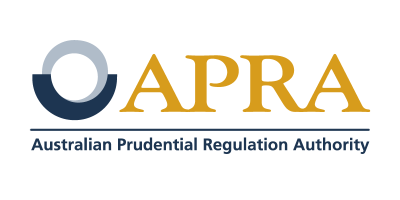APRA relaxes investor property loan ‘speed limit’ as boards made more accountable

Despite conceding that risks in the property market remain “heightened”, the key bank regulator will remove the speed limit on investor lending.
KEY POINTS:
APRA is targeting the quality of home loan serviceability, ditching previous investor speed limits
Bank boards will be made more accountable for the quality and operation of mortgage lending
Westpac revealed as a ‘significant outlier’ in poor lending practices at the royal commission
The Australian Prudential Regulation Authority (APRA) is removing restrictions that keep investor credit growth under 10 per cent a year, replacing them with more permanent measures to strengthen lending standards.
APRA’s move to a more targeted approach was highlighted in recent submissions to the banking royal commission.
TARGETED APPROACH
While none of the banks came out of APRA’s targeted review of residential mortgage serviceability particularly well, Westpac was fingered as a “significant outlier”.
The review of 420 mortgages approved by Westpac — including the St George and RAMs businesses — found numerous failings in serviceability checks.
29 per cent of minimum income verifications (e.g. payroll slips) were not completed
66 per cent had no itemised living expenses collected
30 per cent of borrowers’ financial positions were misrepresented
9 per cent of loans in the sample would not have been approved if the “true financial information” was used in serviceability assessments.
UBS bank analyst Jonathan Mott said the royal commission was a game-changer for Australian financial services.
“In particular, its focus on ensuring the banks ‘obey’ the responsible lending laws, and with boards and management likely to be much more risk-adverse, further tightening of underwriting standards are highly likely across the industry,” Mr Mott said.
“This could potentially lead to a sharp reduction in credit availability.
“Combined with a weaker asset quality and questions over the enforceability of security in the event of irresponsible lending, we have a cautious view on Westpac and the broader Australian banking industry.”
INTEREST-ONLY LIMITS MAY BE REMOVED SOON
The so-called investor lending speed limit was introduced in 2014 as property investors ploughed into the market, sending home prices soaring and sparking fears that the highly leveraged loans were ratcheting up risk in the banks and the broader economy.
An additional speed limit introduced by APRA last year, requiring banks to keep interest-only loans to less than 30 per cent of their mortgage portfolio, has been retained for the time being, but is also expected to be removed.
APRA said both measures were only ever intended to be temporary.
In a key development, APRA is placing the onus on bank boards to provide assurance on the quality and safety of lending standards.
APRA said for the 10 per cent speed limit not to apply, boards will be expected to confirm that:
Lending has been below the investor loan growth benchmark for at least the past 6 months;
Lending policies meet APRA’s guidance on serviceability
Lending practices will be strengthened where necessary.
RISKS STILL HEIGHTENED
APRA chairman Wayne Byres said the decision to remove the investor lending benchmark reflected an improvement in lending standards by the banks, but there was still more work to be done.
“The temporary benchmark on investor loan growth has served its purpose,” he said.
“Lending growth has moderated, standards have been lifted and oversight has improved.
“However, the environment remains one of heightened risk and there are still some practices that need to be further strengthened.”
Australia currently has one of the highest levels of household debt in the developed world, sitting at more than 190 per cent of household disposable income.
In terms of household debt to the size of the economy, Australia ranks only behind Switzerland with a debt-to-GDP ratio of 120 per cent.
SPEED LIMIT REDUNDANT
JP Morgan economist Henry St John said the move was not surprising given the 10 per cent level had become largely redundant.
Investor credit, relating to banks’ entire mortgage book, is growing at less than 3 per cent, down from the peak of well above 10 per cent two years ago.
The annual rate of investor lending, as opposed to overall growth in the total mortgage book, is shrinking at close to 10 per cent.
“We see this as a move by APRA to be less prescriptive to the banks about who they should lend to, and rather concentrate on controlling overall household leverage,” Mr St John said.
APRA’s revised plan requires banks to develop internal portfolio limits on the proportion of new lending at very high debt-to-income levels, and policy limits on maximum debt-to-income levels for individual borrowers.
“This provides a simple backstop to complement the more complex and detailed serviceability calculation for individual borrowers, and takes into account the total borrowings of an applicant, rather than just the specific loan being applied for,” APRA said.
APRA’s current loan affordability tests, set in 2014, require proof a new borrower could repay mortgages at least 2 per cent above the loan product rate, and a floor lending rate of at least 7 per cent.
